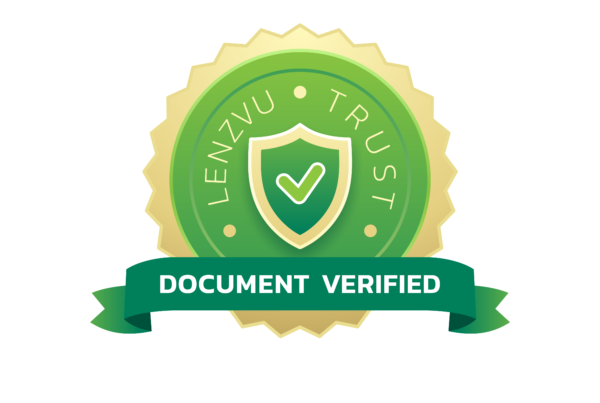Liability waivers are legal documents with the potential of providing comprehensive protection against liability for your business. However, there are strict standards that a waiver must meet if your business is to enjoy its efficacy.
Generally, a liability waiver is legally binding except under the following circumstances:
- Illegality, for example, forging a client’s signature
- Using fraud or misrepresentation to induce attendants to sign the waiver
- When a business owner ought to have known that a client doesn’t intend to be bound by the waiver either in whole or in part.
For most businesses, the first and second exceptions are apparent. However, it is the third exception that may undermine the effectiveness of your liability waiver, as was with the case of Zaky v. 2285771 Ontario NSC 4Inc., 2020 O380 (CanLII).
The plaintiff sustained a fracture to his neck while attempting a backflip in one of Sky Zone’s trampoline parks. He had signed a waiver form. However, he told the court that he was rushed to sign it and did not intend to give up his legal rights.
The plaintiff maintained that there was no effort to bring to his attention the waiver’s critical terms, such as those outlining assumption of risk and relinquishing his legal rights. The defendant did not challenge any of the Plaintiff allegations and only sought a dismissal of the case on the waiver’s account.Sky Zone was found to be liable to pay the Plaintiff for the injury he sustained when he visited the defendant’s fun park.
From the case, it becomes apparent that a business ought to establish that a person intends to be bound by a liability waiver. Businesses also should bring specific terms of an agreement to the attention of their clients. The court established principles that guide the third basis for exclusion of liability to include:
- Terms in the waiver that outline exclusion of liability is inconsistent with the document’s overall purpose and are therefore contrary to a party’s expectation.
- The document’s length and format hide the exclusion of liability terms.
- The time available for reading and understanding the document is insufficient.
How the LenzVU.com Liability Waiver Safeguards Your Business Against Court Action
Tribute Kiosk’s LenzVU.com is a multipurpose intelligence device that provides a free service for businesses to create, design, and capture electronic waivers.
“LenzVU is innovating important electronic waiver safeguards for businesses and their participants that perform double duty: enhanced digital security and reliability while at the same time ensuring that participants are guided through the process of signing each waiver with important “I accept” and “enforced time to review,” tools.” explains Neil Searles partner at Zuber & Company Litigation Counsel.
LenzVU.com is designed with your business in mind. It is free, easy to use, with features that might make your waiver more enforceable in court proceedings. The legal information detailed here needs to be reviewed by a lawyer in the context of the business to review what risk exposures exists and how LenzVU.com tools could help.
From the case, it is clear that merely presenting and getting a client’s signature is not enough. Businesses have a legal responsibility to bring their client’s attention to the full implications of a waiver before signing.
A LenzVU.com liability waiver might help you make a case for the enforceability of a release because:
- It has an “I Accept” button for important clauses
A LenzVu.com waiver allows for an animated “I Accept” button to draw attention to essential clauses about the client’s legal rights being waived or released, and voluntary assumption of risk, among others clauses.
The “I Accept” button feature might be sufficient to demonstrate that you made a reasonable effort to bring essential clauses in your waiver to the client’s attention. Depending on your unique circumstance, the “I Accept” button means you might be able to effectively secure express assumption of risk and may hold up as a suspension of the right to sue in case of injury. It also encourages the person signing to review the essential clauses before accepting the terms.
- You can enforce time spent reviewing a waiver before signing
With a LenzVU.com waiver, you can require and implement that your clients spend a specific amount of time studying a release before they’re able to submit it. You’re guaranteed that your clients spend a minimum amount of time studying the clauses and the rights they’re giving up.
LenzVU.com will document the length of time a user spends reading a release. Presenting time spent on a release will give credence to a motion for dismissal of a case based on a signed waiver.
- The waiver is available through QR, website, or wirelessly at the facility.
With a LenzVU.com liability waiver, you can present the form through QR, website, or wirelessly at your facility. You can post the QR code at your business entrance for individuals to scan, read, and sign the waiver form without having to queue to access a kiosk.
Because of COVID, most businesses offering in-person services are working on an appointment basis to control the number of people in a space. Since the waiver is also available on the website, you can send out links to the waiver form with an appointment confirmation message.
- You can opt to have the waiver availed through a touchless kiosk solution.
LenzVU.com device provides a hotspot that your clients can log in to access and sign the liability waiver.
You also can have your customers access the waiver through a kiosk, review, and complete it. Having multiple opportunities to sign the waiver minimizes queues.
Furthermore, with COVID safety and concerns, a touchless solution means you and your customers do not have to worry about contracting the virus during the process of signing the waiver.
- More than a digital signature
You may find yourself in a situation where a client denies signing a waiver. In such a case, you may be required to prove in court that the person who digitally signed a release is the same person suing you.
Most cell phones have biometrics enabled to allow for unlocking and use. LenzVU.com captures the hardware ID of a device used to sign the waiver, and given the biometrics of the phone, you can match each signed release to a specific person.
- LenzVU.com waivers have an Authenticity Validator
Digital documents can easily be tampered with, and for that reason, a client can challenge the authenticity of a waiver.
LenzVU.com provides an Authenticity Validator tool that allows the document to be uploaded for verification to confirm its authenticity and free from any change.
Conclusion
Features such as the “I accept” options and “enforced time to review” might make your waiver more enforceable if you need to enforce it in a court proceeding, although we offer no guarantees. Further, consider designing a robust risk management plan that requires your staff to educate clients about your facility, potential risk, and the necessary provision of your liability waiver. Your team must encourage visitors to ask any questions they have and answer truthfully.
Next, adopt tools that can capture data on what time a client checked in, time of signing the waiver, and length of time spent on the release. LenzVU.com is the most effective tool in the market for this job. Try for free or call us now at 888-626-1355.
To learn more about how LenzVU’s free waiver platform will help mitigate business risks and to see the waiver validation process in action, visit www.lenzvu.com.
If you need further information or consultation on how you can use LenzVU.com waivers to reduce risks to your business, you may contact John Peters (John@TributeKiosk.com) or call Tribute Kiosk at 888-626-1355 option 1 or write to info@tributekiosk.com.
Disclaimer: Business owners must always ensure they develop and review liability waivers with their lawyers. We do not anticipate that people reading this article will act or refrain from acting without first of all consulting with their lawyers. This article intends to convey legal information and nothing in it is meant to act as legal advice.


